Abstract
Experiments designed to illuminate the mechanism by which folic acid and thymidine inhibit expression of the Xq28 fragile site in human lymphocytes are described. The fragile site is induced by 5-fluorodeoxyuridine (FUdR), a potent inhibitor of thymidylate synthetase, in the presence of otherwise inhibiting concentrations of folic acid but not in the presence of thymidine. These results indicate that the fragile site is expressed because of depletion of deoxythymidine monophosphate (dTMP) available for DNA synthesis.
Full text
PDF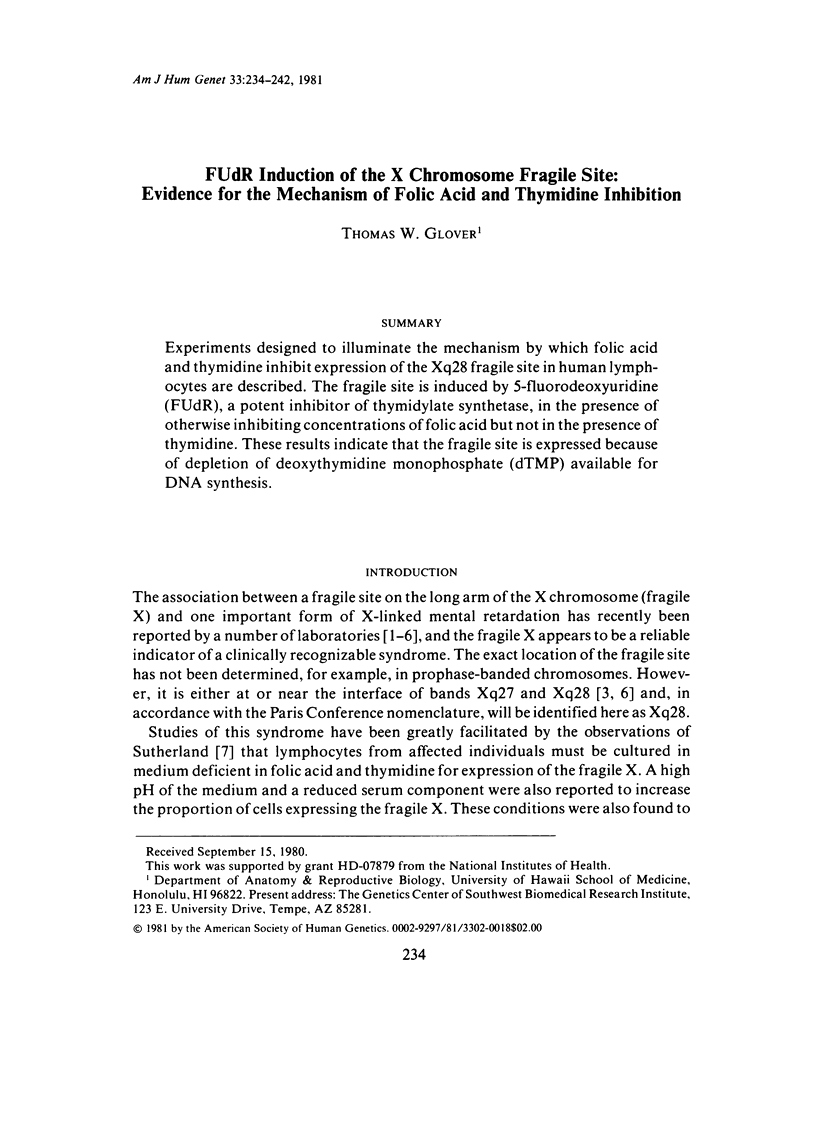
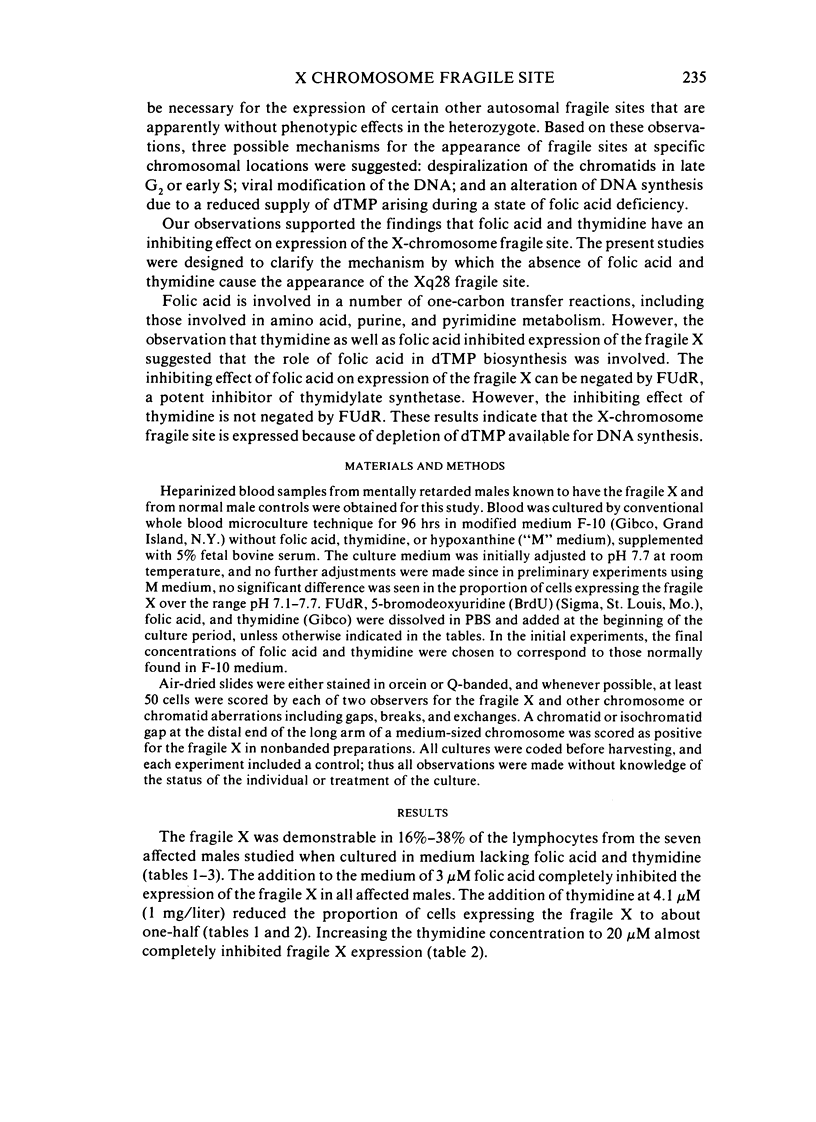
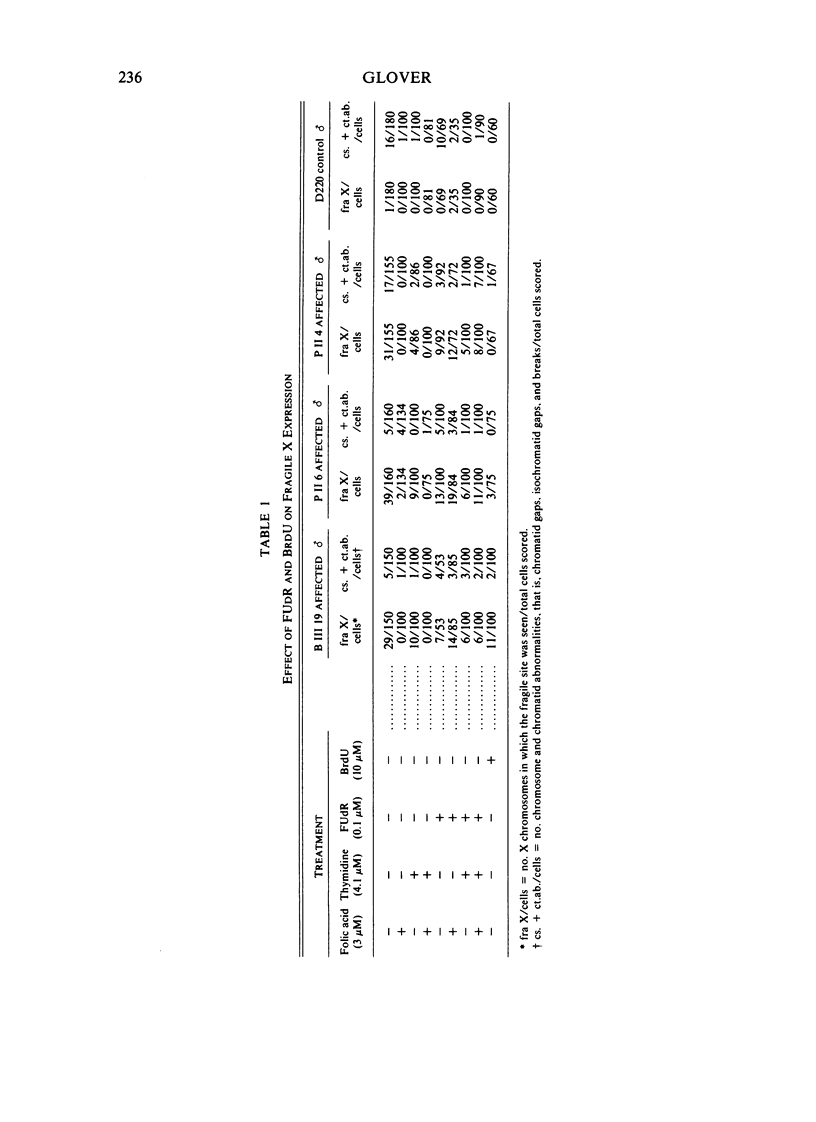
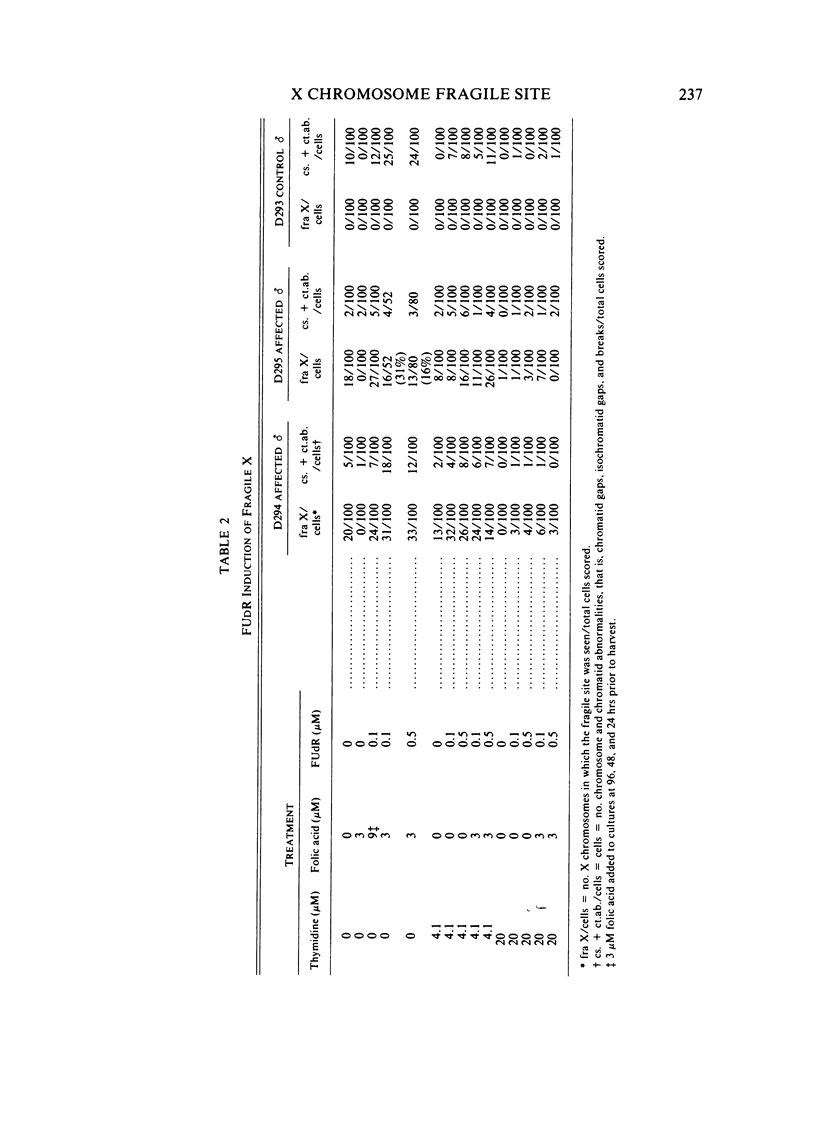
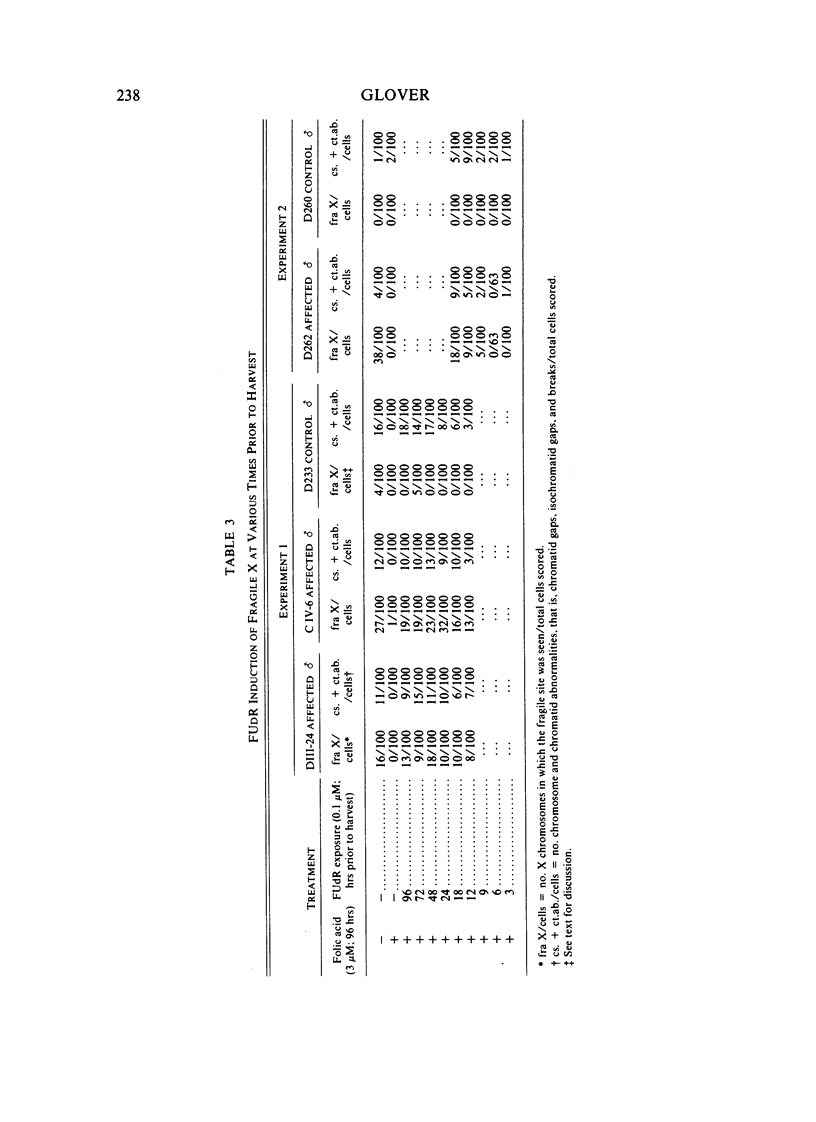
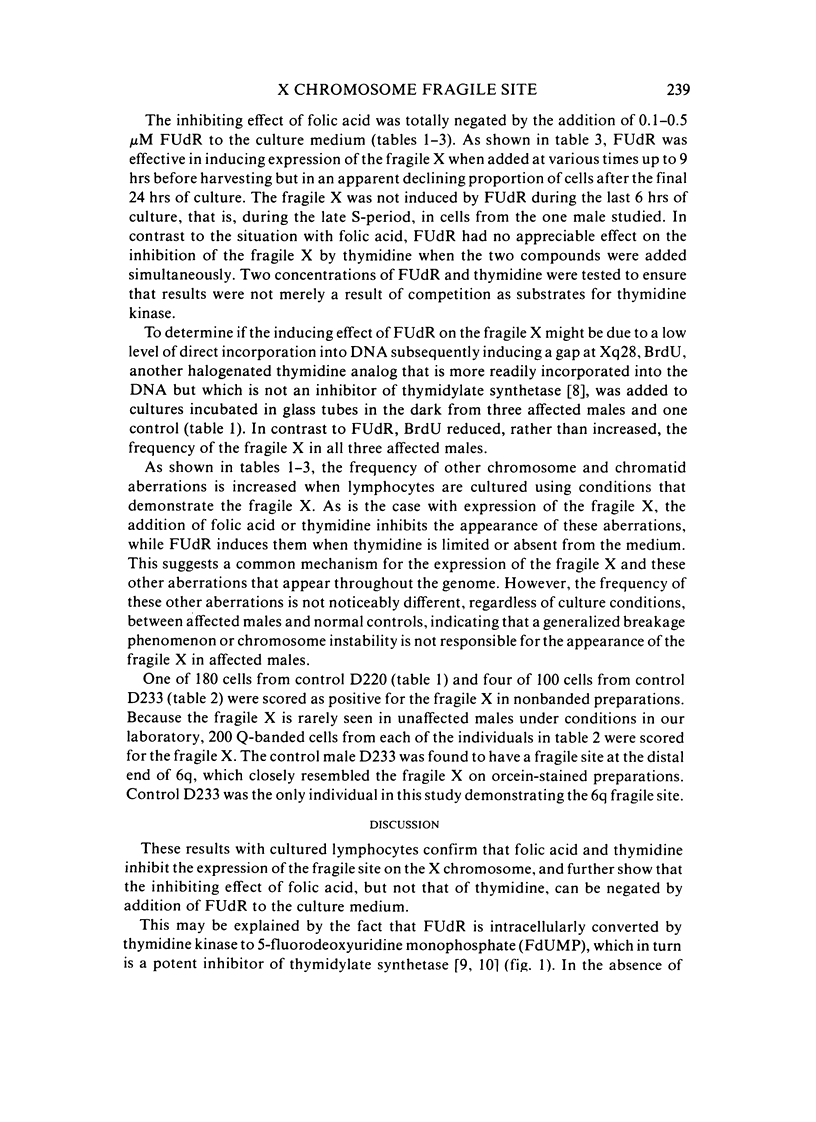
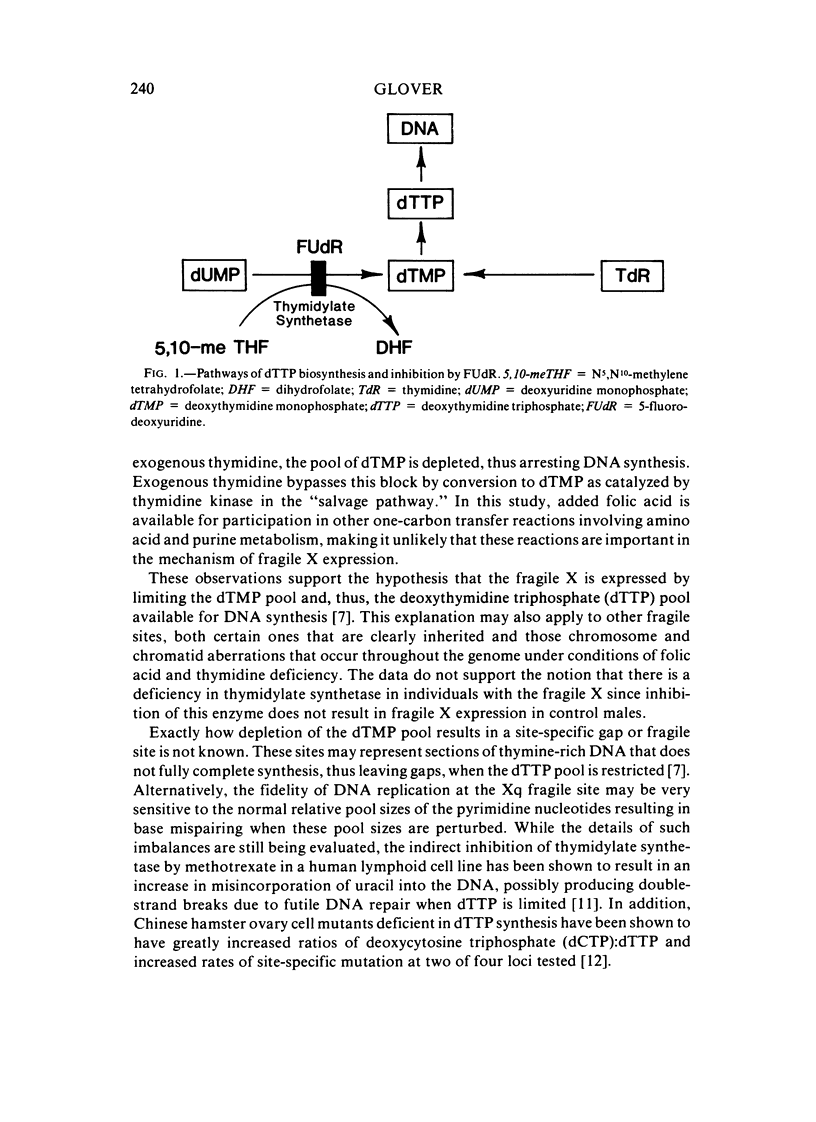
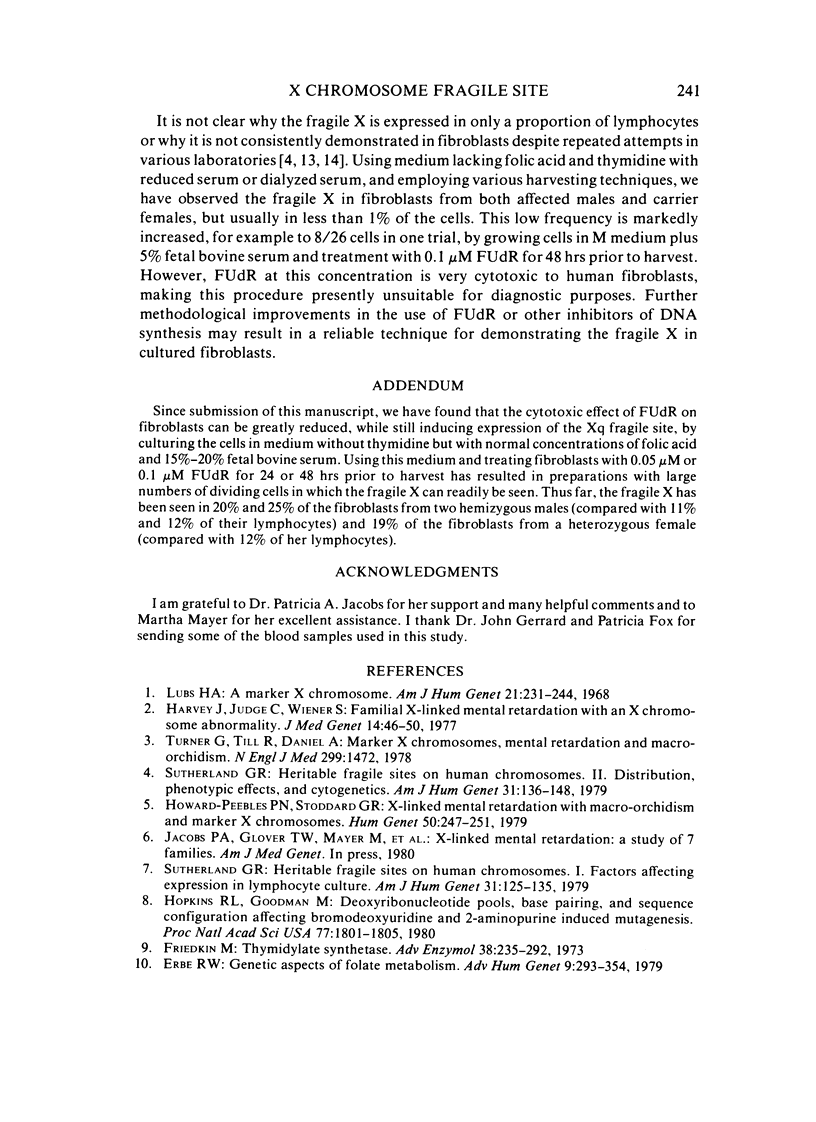
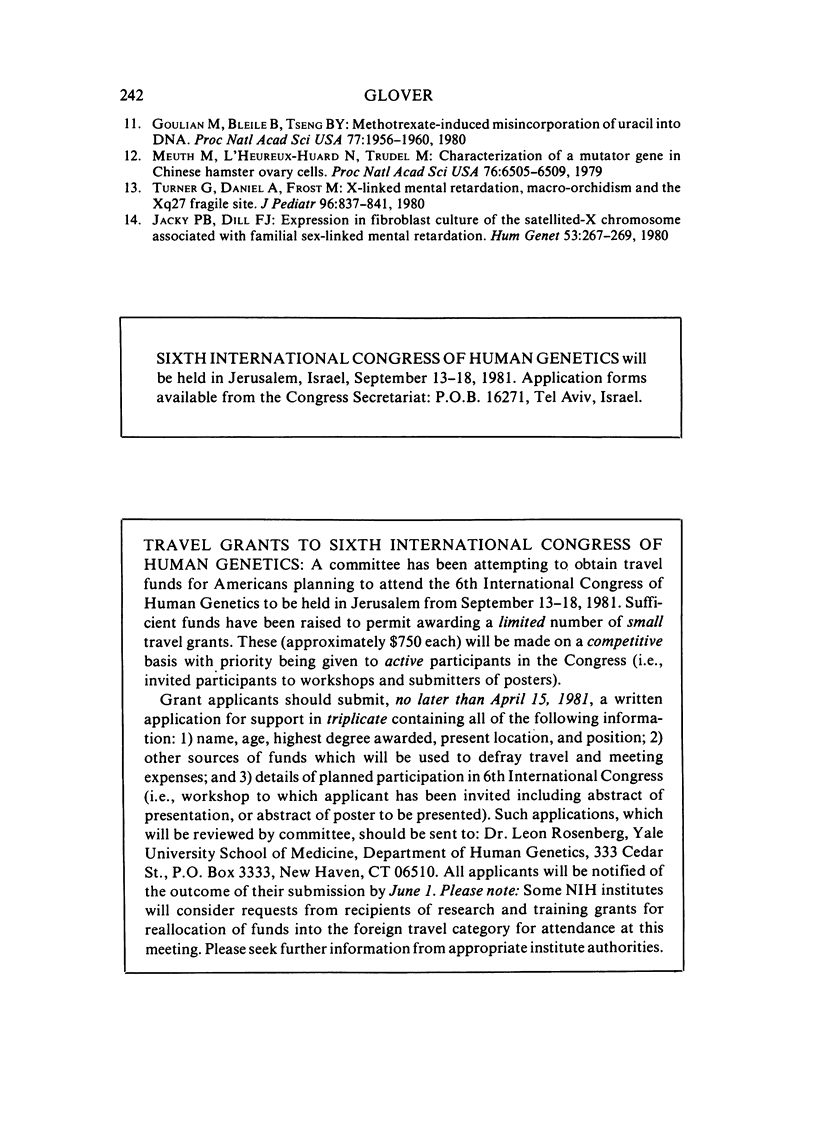
Selected References
These references are in PubMed. This may not be the complete list of references from this article.
- Erbe R. W. Genetic aspects of folate metabolism. Adv Hum Genet. 1979;9:293-354, 367-9. doi: 10.1007/978-1-4615-8276-2_5. [DOI] [PubMed] [Google Scholar]
- Friedkin M. Thymidylate synthetase. Adv Enzymol Relat Areas Mol Biol. 1973;38:235–292. doi: 10.1002/9780470122839.ch5. [DOI] [PubMed] [Google Scholar]
- Goulian M., Bleile B., Tseng B. Y. Methotrexate-induced misincorporation of uracil into DNA. Proc Natl Acad Sci U S A. 1980 Apr;77(4):1956–1960. doi: 10.1073/pnas.77.4.1956. [DOI] [PMC free article] [PubMed] [Google Scholar]
- Harvey J., Judge C., Wiener S. Familial X-linked mental retardation with an X chromosome abnormality. J Med Genet. 1977 Feb;14(1):46–50. doi: 10.1136/jmg.14.1.46. [DOI] [PMC free article] [PubMed] [Google Scholar]
- Hopkins R. L., Goodman M. F. Deoxyribonucleotide pools, base pairing, and sequence configuration affecting bromodeoxyuridine- and 2-aminopurine-induced mutagenesis. Proc Natl Acad Sci U S A. 1980 Apr;77(4):1801–1805. doi: 10.1073/pnas.77.4.1801. [DOI] [PMC free article] [PubMed] [Google Scholar]
- Howard-Peebles P. N., Stoddard G. R. X-linked mental retardation with macro-orchidism and marker X chromosomes. Hum Genet. 1979 Sep;50(3):247–251. doi: 10.1007/BF00399389. [DOI] [PubMed] [Google Scholar]
- Jacky P. B., Dill F. J. Expression in fibroblast culture of the satellited-X chromosome associated with familial sex-linked mental retardation. Hum Genet. 1980 Feb;53(2):267–269. doi: 10.1007/BF00273509. [DOI] [PubMed] [Google Scholar]
- Lubs H. A. A marker X chromosome. Am J Hum Genet. 1969 May;21(3):231–244. [PMC free article] [PubMed] [Google Scholar]
- Meuth M., L'Heureux-Huard N., Trudel M. Characterization of a mutator gene in Chinese hamster ovary cells. Proc Natl Acad Sci U S A. 1979 Dec;76(12):6505–6509. doi: 10.1073/pnas.76.12.6505. [DOI] [PMC free article] [PubMed] [Google Scholar]
- Sutherland G. R. Heritable fragile sites on human chromosomes I. Factors affecting expression in lymphocyte culture. Am J Hum Genet. 1979 Mar;31(2):125–135. [PMC free article] [PubMed] [Google Scholar]
- Sutherland G. R. Heritable fragile sites on human chromosomes II. Distribution, phenotypic effects, and cytogenetics. Am J Hum Genet. 1979 Mar;31(2):136–148. [PMC free article] [PubMed] [Google Scholar]
- Turner G., Daniel A., Frost M. X-linked mental retardation, macro-orchidism, and the Xq27 fragile site. J Pediatr. 1980 May;96(5):837–841. doi: 10.1016/s0022-3476(80)80552-x. [DOI] [PubMed] [Google Scholar]
- Turner G., Till R., Daniel A. Marker X chromosomes, mental retardation and macro-orchidism. N Engl J Med. 1978 Dec 28;299(26):1472–1472. doi: 10.1056/NEJM197812282992625. [DOI] [PubMed] [Google Scholar]


